#laser technology
Text
My uni teacher who was apparently a former inmate was hired by Americans on a high security prison project because of his knowledge of brand new laser technology, only to end up imprisoned by them in said prison.
#dream#text#January 23rd 2023#teacher#university#uni#university teacher#school#prison#inmate#america#us of a#usa#laser#laser technology#technology#jail#imprisoned
284 notes
·
View notes
Text
103 notes
·
View notes
Text

Philips and Sony invented the Compact Disc. This Mini Laser compact disc system (1986) can play that!
87 notes
·
View notes
Text
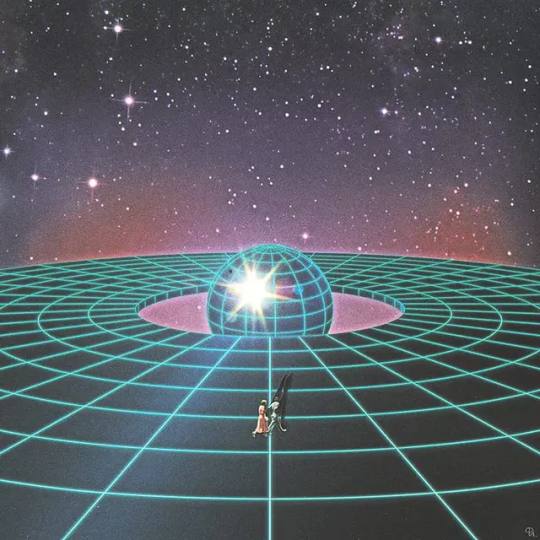


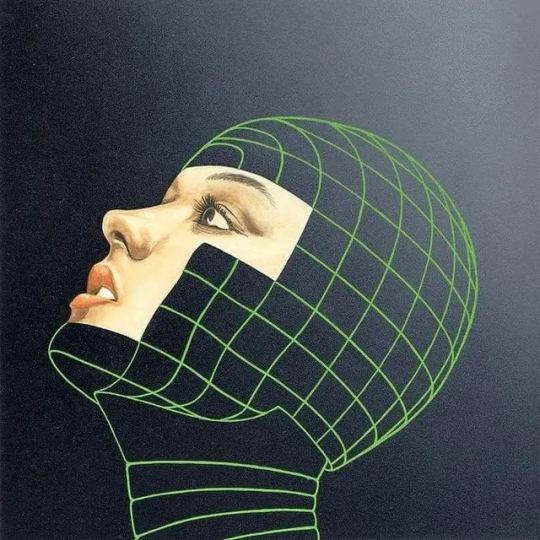
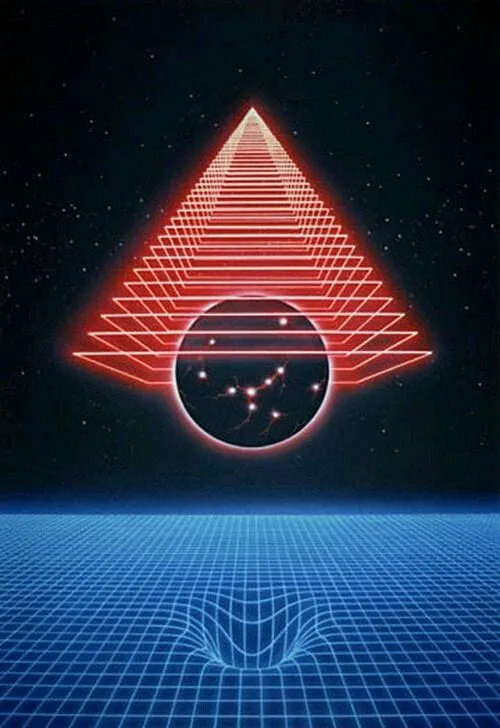

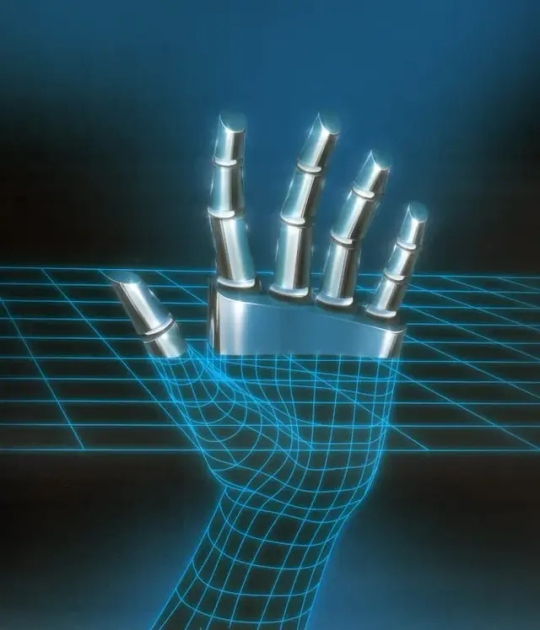
A LOOK AT '80s LASER GRIDS -- AN ANTICIPATION OF THE FUTURE THAT NEVER WAS.
PIC(S) INFO: Mega spotlight on asssorted, unnamed '80s decade cyber grid art pieces, and a so-called "ubiquitous symbol of 1980s graphic design." Various artists.
MINI-OVERVIEW: "The 80s grid is a truly ubiquitous element, a powerful visual cliche symbol of the whole decade. Looking at retro 80s graphics, advertisements, videogames and film, it is striking how the laser grid is found over and over again.
A central vanishing point, dark background, a grid of thin lines in primary colours; optionally, the sun setting behind mountains. The look of the laser grid follows a precise set of rules and principles while appearing in many variations. It creates a futuristic atmosphere, a space of possibility for the technological future people imagined forty years ago.
The 80s was a time of political tension and Cold War, paired with mass consumption and optimism for technology and a computer-driven society. This is what the 80s light grid incorporates, creating a futuristic space of possibility, and describing a future that never was."
-- INDIEGROUND, "From Kubrick to Vaporwave: A Brief History of the '80s Grid," published August 4, 2022
Source: https://indieground.net/blog/80s-grid-history.
#80s Grid#The Grid#Laser Technology#Vintage Cyber Art#1980s Cyber Art#80s#Computer Grid#Sci-fi Art#80s Cybergrid#Science Fiction#Graphic Design#Sci-fi#Science fiction#Cyber Graphic Design#Cyber grid#80s cybergrid#Cybergrid#1980s#80s graphics#Laser grid#Bionic#80s Sci-fi#1980s Cyber Grid#Bionic Art#Artificial Intelligence#80s Sci-fi Art
10 notes
·
View notes
Link
C. And C. Laser Engineering Pvt Ltd. is known for offering all kinds of industrial laser solutions and a range of Scientific and Industrial Laser Products and Services. This includes Industrial Products right from small components, and various spares of laser systems to the installation of complete laser workstations along with maintenance and servicing.
We provide laser workstations with or without material handling systems that are used for laser marking, laser engraving, deep engraving, laser welding, laser cutting, nanosecond micro-machining, and ultra-micro-machining.
We also offer laser-based solutions using Nano–Pico – Femtosecond, IR, Green, UV and DUV lasers.
We have more than 30 years of experience in the laser industry and with this vast experience and range of laser technology available, we are able to provide high-quality laser services and laser systems in the industry.
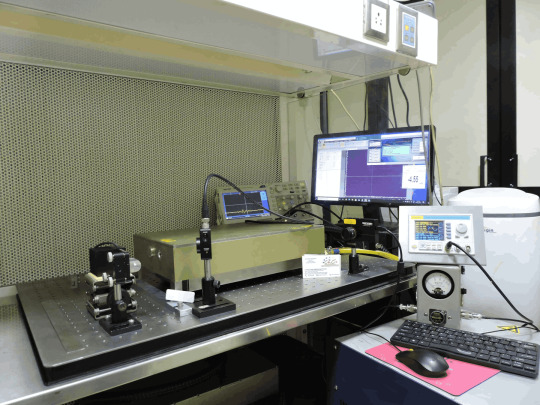
We provided lasers and services as well for our principal namely –
Control Laser Corporation,
Iradion
MegaWatt Lasers
QPC Lasers
Amplitude Lasers (Continuum),
PhotoScribe
Uptek
The Scientific range of products from C. And C. Laser Engineering have various applications and some of them are LIDAR, Macromolecules research, Laser microprobes analysis, Fiber Bragg grating diagnostics, Laser-Induced Breakdown Spectroscopy (LIBS), laser flash photolysis, Synchronized pumping of other lasers, Interferometry, Biological imaging, Materials process research.
Our laser marking job work and laser engraving job work is acknowledged and appreciated for their precision, details, and uniformity on any metals and non-metals.
Our prime goal is to offer the best and excellent services and quality products to our customers and always put in our best efforts to achieve that objective.
#lasers#laser technology#laser applications#laser marking#laser welding#laser cutting#laser engraving#micromachining#lidar#iradion lasers#co2 lasers#fiber laser#uv laser#laser systems#laser machines
4 notes
·
View notes
Photo
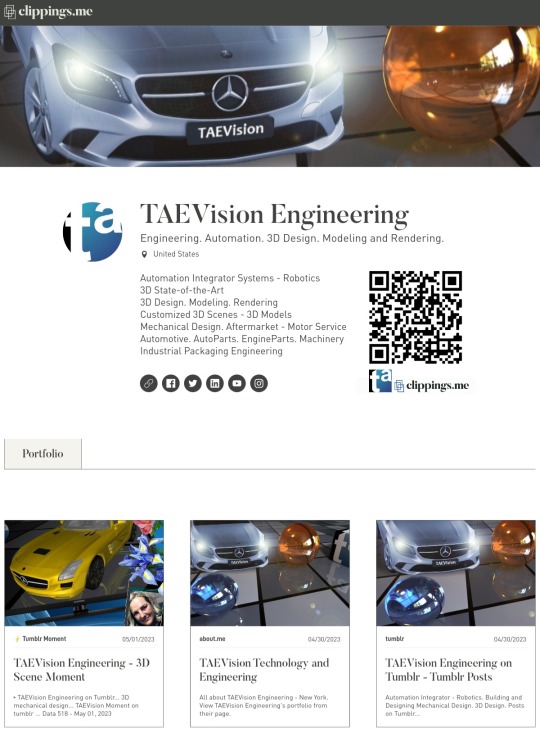
📰 TAEVision Engineering - Writing Portfolio on Clippings. me
Technology
3D Mechanical Design State-of-the-Art
NY NYC
▸ TAEVision Engineering - Writing Portfolio (last update)
▸ TAEVision Engineering's Moment on Tumblr

Clippings Portfolio - May 01, 2023
#TAEVision#engineering#3d#mechanicaldesign#writing portfolio#clippings.me#laser technology#design#StateoftheArt#NY#NYC
2 notes
·
View notes
Text
How HOLMIUM LASER-BLAZE Are Helped In Treating Urological Conditions?
Over the past few decades, significant advancements in medical technology have preexisting procedures and have gained the popularity of lasers in the treatment of various urological conditions. Patients suffering from benign prostatic hyperplasia (BPH) or prostate enlargement, bladder stones, and kidney stones have found respite in laser-based treatments, particularly the Holmium laser.
The prevalence of health issues associated with the enlargement of the prostate gland, dating back to early human civilisation, cannot be overstated. Symptoms such as poor urinary stream (Urinary hesitancy), pain during urination (Dysuria - a burning sensation), and increased frequency of urination accompanied by involuntary leakage are often disregarded by patients because of embarrassment or fear of seeking medical assistance.
However, ignoring these symptoms can exacerbate the condition, leading to complications like recurrent urinary tract infections, Hematuria, urinary retention, and even renal failure.
While medical management can relieve symptoms in many cases, surgical intervention becomes imperative for those unresponsive to conservative measures. Unfortunately, the apprehension associated with surgery often deters individuals from seeking timely treatment, resulting in avoidable complications.
Advancements In urological interventions!
Advancements in science have initiated in the era of minimally invasive procedures through the miniaturisation of endoscopic equipment and improvements in energy sources.
While open surgery was once the foundation of urological interventions, it has now become a rarity.
The field of urology has undergone a remarkable transformation, especially with the emergence of laser technologies.
The traditional Transurethral Resection of the Prostate (TURP) was the gold standard for treating enlarged prostates or BPH in the past.
However, with the evolution of lasers in urology surgical instruments, surgeries for enlarged prostate conditions have significantly enhanced safety profiles, reduced bleeding, and improved efficacy, with the
Holmium laser urology surgical instrument emerging as the preferred choice in urological procedures.
The Holmium laser Blaze for urology surgical instruments has a diverse range of applications that continue to expand. It can be used for lithotripsy and urothelial tumour ablation throughout the urinary tract, prostate resection, incision of various urinary tract strictures, and even carbon dioxide laser vaporisation of cutaneous lesions in the external genitalia.
The Holmium laser's 2100-nm wavelength provides a distinctive combination of vaporisation and coagulation, enabling precise cutting actions when higher energy levels are applied.
With a shallow penetration depth of less than 0.5 mm in water and tissue, the Holmium laser allows for precise energy delivery, ensuring safety and minimising potential complications.
The Advantages of Holmium Laser in Urological Treatments!
As laser technology continues to evolve, the Holmium laser has emerged as a powerful surgical instrument or precision diagnostic instrument in urology medical procedures.
It has many advantages that make it an attractive option to treat a range of urological conditions.
Let's explore the key advantages of the Holmium laser in urological procedures:
1..Reduced Bleeding and Faster Recovery:
One of the significant advantages of the Holmium laser is its ability to cause minimal bleeding during and after surgery. This not only improves patient safety but also accelerates the recovery process. With reduced blood loss, patients require fewer blood transfusions and experience less post-operative discomfort, leading to a shorter hospital stay and faster overall recovery.
2..Improved Urinary Flow:
For prostate surgery, a Laser Prostate invasive procedure or HoLEP using the Holmium laser Blaze offers superior results in relieving urinary flow obstruction compared to traditional procedures like Transurethral Resection of the Prostate (TURP). HoLEP with the Holmium laser ensures better urinary flow, thereby improving the quality of life for patients suffering from enlarged prostates.
3..Long-Term Results:
The Holmium laser treatment offers long-lasting results with minimal chances of recurrence. This means patients can experience durable relief from symptoms, reducing the need for further interventions or treatments in the future. The Holmium laser's precision in targeting problem areas ensures a thorough treatment, resulting in a lower chance of the condition reoccurring.
4..Expanded Safety for High-Risk Patients:
Another remarkable advantage of the Holmium laser is its ability to safely treat patients who are considered unfit for traditional surgeries like TURP because of their critical medical conditions. Patients with significant comorbidities, such as major cardiac illnesses, renal diseases, advanced diabetes, bleeding disorders, anticoagulant dependency, respiratory problems, and significant anaemia can undergo Holmium laser treatment with safety and confidence. This expands the treatment options for patients who need it the most, allowing them to benefit from the latest advancements in urological care.
The Holmium laser has revolutionised urological medical procedures, from minimising bleeding and enabling faster recovery to providing superior relief in urinary flow obstruction.
As technology continues to advance, we can expect even more innovations in laser-based treatments, providing better outcomes and improved quality of life for patients with urological conditions.
Moreover, the Holmium laser's user-friendly urology surgical instrument is designed to facilitate its operation by urologists and allied health professionals. Its versatility in addressing a myriad of urologic conditions has made it an invaluable hospital instrument or surgical instrument in medium to large urological units, appealing to practitioners and patients alike for its efficiency and safety.
Holmium laser has revolutionised the treatment landscape of urological conditions by offering a safer, more effective, and minimally invasive urological treatment alternative to traditional surgical approaches.
By exploiting inclusive laser technology, urologists can provide patients with advanced urology treatments that deliver optimal outcomes and improve their quality of life, marking a significant milestone in the field of urology procedures.
To all allied healthcare personnel in the UK, USA, Asia, and Africa, all NHS, and private please visit our website at Euronoxx Medical. and order best quality Diagnostic Instruments, Patient Monitoring Instruments, Rehabilitation equipments, Laboratory Equipments, etc. We're ready to export in your medical hubs.
#laser technology#Holmium laser#surgical instrument#surgical instrument tracking system market trends#invasive procedure#Euronoxx Medical Group
0 notes
Text
Unwanted hair can be a constant source of frustration for many individuals, leading to endless shaving, waxing, and plucking routines. Fortunately, the arrival of laser hair removal in Forney, Texas has revolutionized the beauty industry, offering a long-lasting solution to the age-old battle against unwanted hair.
0 notes
Text
Laser Technology in Skin Care: 6 Game-Changing Advancements

In the dynamic world of skin care, laser technology stands as a testament to innovation and transformation. From its inception, laser technology has journeyed through an incredible evolution, significantly impacting dermatological treatments. Today, it's not just a tool for beauty enhancement but a crucial element in addressing a myriad of skin concerns. This article aims to shed light on six groundbreaking advancements in laser technology that have revolutionized skin care, offering more precise, effective, and diverse treatment options. We delve into the realm where science meets beauty, exploring how laser technology has become a cornerstone in modern dermatology.
The Evolution of Laser Technology in Skin Care
Tracing the Laser's Journey in Dermatology
The story of laser technology in skin care is one of continuous innovation and adaptation. Initially, lasers were rudimentary tools used for basic cosmetic procedures. However, as technology advanced, so did the capabilities of laser treatments. Today, lasers are sophisticated instruments capable of addressing a wide range of skin issues, from aging and sun damage to more complex conditions like scarring and pigmentation disorders.
The impact of laser technology on dermatology has been profound. It has opened doors to treatments that were once thought impossible, offering patients non-invasive options with minimal downtime and more noticeable results. This evolution has not only expanded treatment possibilities but also improved safety and patient comfort. The precision that modern laser technology provides has transformed it into an essential tool in any dermatologist's arsenal, enabling customized treatments tailored to individual skin types and concerns.
Laser technology's journey in skin care is a vivid illustration of technology's potential to enhance and refine medical and cosmetic treatments. As we explore the six game-changing advancements in this field, we will see how each development has contributed to making laser treatments more versatile, effective, and accessible, further cementing laser technology's role in advancing dermatological care.
6 Game-Changing Laser Technologies in Skin Care
Fractional CO2 Laser
Skin Resurfacing Redefined: This technology targets fractions of skin at a time, promoting rapid healing. It's exceptional for treating scars, wrinkles, and sun damage.
How It Works: The laser creates tiny microthermal zones in the skin, stimulating collagen production for rejuvenation.
Applications: Ideal for those seeking to reduce signs of aging and improve skin texture.
Intense Pulsed Light (IPL)
Beyond Traditional Lasers: While not a laser in the traditional sense, IPL uses multiple wavelengths to treat various skin conditions.
Functionality: It's effective in treating sun damage, rosacea, and hyperpigmentation.
Skin Compatibility: Best for lighter skin tones due to its broad spectrum of light.
Nd:YAG Laser
Deep Penetration for Various Treatments: Known for its deeper penetration, this laser is used for skin tightening, vein removal, and even tattoo removal.
Unique Features: Its wavelength is suitable for treating deeper skin issues and is safe for darker skin tones.
Diode Laser
Precision in Hair Removal: Diode lasers are primarily used for hair removal, offering safer and more effective results.
Advantage: It is particularly effective on darker hair and can be used on various skin types.
Erbium Laser
Gentler Approach to Skin Resurfacing: Erbium lasers offer a milder option for skin resurfacing, ideal for fine lines and moderate skin aging.
Treatment Scope: It involves less heat, leading to a more comfortable experience and quicker recovery.
Pico Laser
Revolution in Tattoo and Pigment Treatment: This newer technology is used for tattoo removal and pigmentation disorders, delivering energy in picoseconds.
Benefits: It provides a more effective solution with fewer treatments and reduced risk of skin damage.
Leveraging Laser Technology in Skin Care
Navigating the World of Laser Treatments for Optimal Skin Health
Integrating laser technology into your skincare routine can significantly enhance your skin’s appearance and health. Here’s how to do it effectively:
Identify Your Skin Concerns: Understand your primary skin issues, whether it’s aging signs, pigmentation, or unwanted hair. This will guide your choice of laser treatment.
Research Various Laser Options: Educate yourself on different laser technologies and how they align with your skin concerns.
Consult with a Dermatologist: Professional advice is crucial. A dermatologist can assess your skin type and recommend the most suitable laser treatment.
Consider Your Skin Type and Color: Different lasers work better on different skin types and tones. Ensure the selected treatment is safe and effective for your skin.
Prepare for the Treatment: Follow any pre-treatment instructions given by your dermatologist to ensure the best results.
Understand the Recovery Process: Be aware of what to expect post-treatment, including any downtime and care instructions.
Evaluate the Results: After completing the treatment, assess the results to determine if further sessions are needed.
By carefully selecting and incorporating laser treatments into your skincare regimen, you can address specific skin concerns more effectively, harnessing the power of advanced technology to achieve healthier, more radiant skin.
The Future of Laser Technology in Skin Care
Visioning the Next Wave in Dermatological Advancements
Industry experts are enthusiastic about the future of laser technology in skin care, predicting significant advancements and broader applications. They anticipate the development of more sophisticated, less invasive lasers capable of targeting specific skin concerns with even greater precision and fewer side effects. The future may see lasers that can adapt in real-time to individual skin types and conditions, offering truly personalized treatments. Another area of potential growth is in combining laser treatments with other technologies, such as AI and nanotechnology, to enhance efficacy and safety. Experts also foresee increased use of lasers in treating a wider range of skin conditions, from chronic disorders to cosmetic enhancements, making these treatments more accessible and mainstream.
Some FAQs Answered On Navigating Laser Technology in Skin Care
How safe are laser treatments for skin?
When performed by qualified professionals, laser treatments are generally safe. The risk of side effects depends on the type of laser, the condition being treated, and the patient's skin type. It's important to have a consultation with a dermatologist to understand any risks.
Can laser treatments work for all skin types?
Most modern lasers are effective across a range of skin types. However, certain lasers are better suited for specific skin tones, so it's crucial to choose the right type for your skin.
What is the recovery time for laser skin treatments?
Recovery time varies depending on the type of laser treatment. Some treatments have minimal downtime, while others might require a few days of recovery.
Are the results of laser skin treatments permanent?
The permanence of results depends on the type of treatment. Some treatments, like laser hair removal, offer long-lasting results, while others may require maintenance sessions.
In conclusion, laser technology's role in skin care has evolved remarkably, bringing about substantial advancements that have reshaped dermatological practices. From enhancing treatment precision to expanding the range of treatable conditions, lasers have become an indispensable tool in modern skin care. These developments not only signify technological progress but also reflect a deeper understanding of skin health. As we look forward, staying abreast of advancements in laser technology and seeking professional guidance are essential for anyone looking to harness these innovations for their skin care needs. The future of dermatology, empowered by laser technology, promises more effective, personalized, and accessible treatments, marking a new era in the pursuit of skin health and beauty.
1 note
·
View note
Text
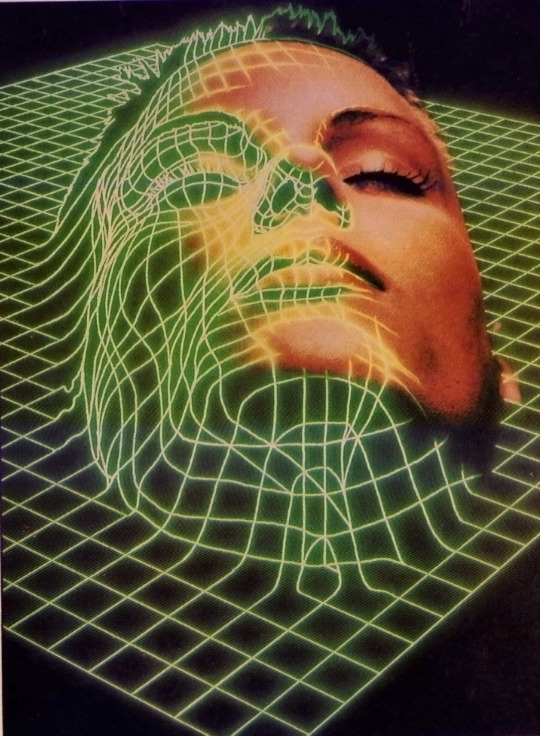
THE UBIQUITOUS '80s LASER GRID -- UPLOAD MY CONSCIOUSNESS NOW.
PIC INFO: Spotlight on an unnamed '80s decade cyber/laser grid art piece, and an ubiquitous symbol of 1980s graphic design -- the laser grid. Artist unknown.
"A central vanishing point, dark background, a grid of thin lines in primary colours; optionally, the sun setting behind mountains. The look of the laser grid follows a precise set of rules and principles while appearing in many variations. It creates a futuristic atmosphere, a space of possibility for the technological future people imagined forty years ago.
The '80s was a time of political tension and Cold War, paired with mass consumption and optimism for technology and a computer-driven society. This is what the '80s light grid incorporates, creating a futuristic space of possibility, and describing a future that never was."
-- INDIEGROUND, "From Kubrick to Vaporwave: A Brief History of the '80s Grid," published August 2022
Source: https://indieground.net/80s-grid-history.
#80s Grid#The Grid#Laser Technology#Vintage Cyber Art#1980s Cyber Art#80s#Computer Grid#Sci-fi Art#80s cybergrid#Science Fiction#Graphic Design#Sci-fi#Science fiction#Cyber Graphic Design#Cyber grid#80s Cybergrid#Cybergrid#1980s#80s graphics#Laser grid#Bionic#Bionic Art#1980s Cyber Grid#80s Sci-fi#80s laser grid
30 notes
·
View notes
Text
Silicon (Si) Lenses Market Ready To Reach An Estimated Market Size Of US$ 383.76 Million By The End Of 2030

Market Overview:
The global Silicon (Si) Lenses Market is estimated to be valued at US$ 215.18 million in 2022 and is expected to exhibit a CAGR of 7.5% over the forecast period 2022-2030, as highlighted in a new report published by Coherent Market Insights. Silicon lenses are widely used in various industries such as healthcare, aerospace, defense, and electronics. These lenses offer numerous advantages such as high transmission rate, low reflection, and excellent thermal stability. The demand for Silicon lenses is driven by the increasing use of technology in different sectors and the need for high-quality optical components.
Market key trends:
The key trend driving the Silicon lenses market is the growing demand for high-resolution imaging systems. With the advancements in technology, the demand for high-quality imaging has increased significantly. Silicon lenses offer excellent image resolution and clarity, making them ideal for use in cameras and other imaging devices. These lenses provide superior optical performance, ensuring clear and sharp images. For instance, many smartphone manufacturers are using Silicon lenses to enhance the image quality of their devices.
PEST Analysis:
Political: The political factors impacting the Silicon lenses market include government regulations related to the use of optical components in different industries. Governments focus on promoting domestic manufacturing and research and development activities to drive technological innovation.
Economic: The economic factors influencing the market include the overall economic growth of countries, disposable income of individuals, and investment in technological advancements. The growth of emerging economies and increasing disposable income are expected to drive market growth.
Social: The social factors affecting the market include changing consumer preferences and an increasing demand for high-quality imaging devices. The adoption of smartphones with advanced camera features and the use of Silicon lenses in healthcare and defense sectors are driving market growth.
Technological: Technological advancements play a crucial role in the Silicon lenses market. Continuous innovations in lens manufacturing techniques, such as precision molding and coating technologies, are enhancing the quality and performance of Silicon lenses. The integration of Silicon lenses with other advanced technologies, such as augmented reality and artificial intelligence, is also driving market growth.
Key Takeaways:
- The Global Silicon (Si) Lenses Market Demand is expected to witness high growth, exhibiting a CAGR of 7.5% over the forecast period. This growth is driven by the increasing demand for high-resolution imaging systems in various industries.
- In terms of regional analysis, North America is expected to dominate the Silicon lenses market due to the presence of major players and technological advancements in the region. Asia Pacific is expected to be the fastest-growing region, driven by the increasing demand for smartphones and consumer electronics.
- Key players operating in the global Silicon lenses market include Edmund Optics, Thorlabs, ISP Optics Corporation, II-VI Incorporated, Precision Optical Inc., CVI Laser Optics, Newport Corporation, LightPath Technologies, Sydor Optics, Janos Technology LLC, Reynard Corporation, Shanghai Optics Inc., Knight Optical, Rocky Mountain Instrument Co., and Shanghai Optics Technology Co., Ltd. These players focus on product innovation and strategic partnerships to gain a competitive edge in the market.
#Silicon (Si) Lenses Market#Silicon (Si) Lenses Market Growth#Silicon (Si) Lenses Market Insights#Silicon (Si) Lenses Market Forecast#Silicon (Si) Lenses Market Values#Silicon (Si) Lenses Market Outlook#thermal#expansion#Silicon lenses#imaging systems#laser technology#aspheric lenses#Coherent Market Insights
0 notes
Text
The application of light by stimulated emission of radiation is the basis of a laser, which stands for "Light Amplification by Stimulated Emission of Radiation".

Stimulated emission occurs when an atom or molecule in an excited state is stimulated by an incoming photon to release a second photon that has the same energy, frequency, phase, and direction as the incoming photon. This process amplifies the original light wave and produces a coherent beam of light.
In a laser, a medium (such as a gas, liquid, or solid) is excited by an external energy source, such as an electric current or another light source. This excitation causes the atoms or molecules in the medium to reach a higher energy level. When these excited particles encounter photons of the appropriate energy, they emit additional photons through stimulated emission.

This process creates a cascade effect, where the emitted photons stimulate nearby excited particles to emit more photons, leading to a coherent and intense beam of light. The light produced by a laser is characterized by its high intensity, narrow beam divergence, and coherence.

Laser technology has numerous applications across various fields. Some common applications include:
1. Medicine: Lasers are used in surgical procedures, such as laser eye surgery or laser ablation of tumors. They are also used in cosmetic procedures like hair removal, tattoo removal, and skin rejuvenation.
2. Communication: Laser beams are used in optical fiber communication systems to transmit vast amounts of data over long distances with minimal signal loss.
3. Manufacturing: Lasers are used for cutting, welding, drilling, and marking in various industries, including automotive, electronics, and aerospace.
4. Scientific Research: Lasers are instrumental in scientific research, including spectroscopy, microscopy, and particle acceleration.
5. Defense and Security: Lasers are used in military applications for target designation, rangefinding, and missile defense systems. They are also used in security systems, such as laser-based alarms or biometric scanners.
Overall, the application of light through stimulated emission of radiation in lasers has revolutionized numerous industries and technologies, providing precise and efficient solutions in various fields.

0 notes
Text
Understanding Laser Projectors: Everything You Need to Know

Projectors have been around for a few decades now. They are an essential requirement in every business meeting, class presentation, project proposal, and movie night, to name a few. There has been a lot of progress in the quality of projectors with the advancement in technology. The latest advancements have given popularity to laser projectors.
The History of Projection Technology
It all began with the invention of the first projector in 1984 by American Thomas Edison, later developed by William Kennedy Laurie Dickson. However, it was French inventor Louis Le Prince who first used it, though others credit the Lumière brothers in 1985 for the rise of the projector.
A projector, also known as a movie projector or motion picture projector, is a device that displays moving images onto a screen.
Projectors emerged as a technological replacement for traditional blackboards in educational spaces. They are also widely used in various corporate or institutional settings for presentations, meetings, and as part of home entertainment systems.
Today, lasers have been harnessed to create video screens, with their peak usage estimated to have originated in the 1980s, making video projectors widely known.
The exact origin of the projector's invention remains unclear to this day. However, it is evident that the concept of projecting images can be traced back to the world of cinema, which no longer considers them solely for digital movie projections. Instead, they have become versatile tools applicable in various settings, such as classrooms, offices, auditoriums, and more.
What are Laser Projectors?
LASER (Light Amplification by Stimulated Emission of Radiation) or laser technology has become part of regular life. It’s used in weaponry, industrial, entertainment, and medical applications.
A laser projector is a device that projects changing laser beams on a screen to create a moving image for entertainment or professional use. It consists of a housing that contains lasers, mirrors, galvanometer scanners, and other optical components. A laser projector can contain one laser light source for single-color projection or three sources for RGB (red, green, and blue) full color projection.
How do Laser Projectors Work?
youtube
A laser projector uses a light source deflected off of a chip and magnified and focused by lenses to project an image on your screen. Unlike a traditional video projector, which projects white light through a color filter to generate the colors in your image, a laser projector uses laser light in primary colors, producing less wasted light.
Types Of Laser Projectors
There are two common types of laser projectors which are industrial and home entertainment devices.
1. Industrial Laser Projectors
These devices were introduced to the market in 2003. They are commonly used in optical guidance systems and workplaces. Workers in factories can work and produce more easily with the help of visual guidance from these devices. Industrial laser projectors help to significantly facilitate the manufacturing process. They are known as the most accurate type of projector on the market, even for 3D projects.
2. Home Entertainment Laser Projectors
This category was invented quite recently, back in 2015. Laser projectors for home entertainment can produce wider and sharper colors than traditional devices without compromising brightness. As a result, laser projectors produce images that are more lifelike, with truer colors and richer colors. They last much longer (about ten times) than normal projectors, but are also more expensive.
Advantages of Laser Projectors
1. Extended Operational Life:
Investing in laser projectors offers a compelling advantage with their significantly increased operational life. Unlike conventional projectors that might only last around 500 hours, laser projectors boast an impressive lifespan of approximately 20,000 hours. Additionally, their brightness remains consistent throughout their usage, providing a one-time investment that can serve you well for up to a decade. For extended operations without frequent replacements, many turn to reputable providers like Epson UAE for the best laser projectors.
2. Energy Efficiency:
Laser projectors stand out for their low energy consumption, producing crisp and sharp visuals while conserving valuable resources. These projectors utilize only a minimal amount of energy compared to bulb projectors that scatter energy resources without precise focus. Not only does this save energy, but it also ensures superior image quality, making laser projectors a more efficient and sustainable choice.
3. Lamp Replacement Elimination:
A major advantage of prioritizing laser projectors is the complete absence of lamp replacement needs. Traditional bulb projectors require frequent lamp changes as their brightness diminishes over time, affecting performance. In contrast, laser projectors operate using a sharp and long-lasting laser resource, eliminating the need for replacements altogether. By opting for laser projectors without lamps or bulbs, you avoid the hassle of maintaining and replacing these components.
4. Throw Distance:
Many laser projectors on the market are ultra-short throw. These projectors are perfect for almost any room, no matter the size. They are designed to be placed on a table, very close to the screen. For example, some ultra-short-throw projectors can produce a 120-inch image at 8 inches from the screen.
5. Lower Maintenance:
Choosing laser projectors translates into lower ownership costs compared to traditional bulb projectors. The frequent bulb changes in conventional projectors drive up expenses significantly. Laser projectors, on the other hand, have a much longer lifespan and require minimal maintenance, providing a cost-effective solution for the long term. By consulting reputable services such as Epson UAE, you can find high-quality and cost-effective laser projectors that are a smart investment for the future.
Final Thoughts
There are many advantages you can get from a laser projector, including instant on, energy efficiency and longevity, which may outweigh the cost. No matter how you look at it, a laser projector is an investment. Even with widespread use, the average laser projector can be expected to last around 12 years. If you're looking to use a projector for the long haul, then you might want to consider a laser projector.
0 notes
Text
#Hair follicle destruction#Hair removal treatment#Laser Hair Removal#Laser technology#Long-lasting results#Painless hair removal#Permanent hair reduction#Safe and effective#Smooth skin#Unwanted hair removal
0 notes
Link
UV laser is the best laser for Glass laser marking because
UV LASER (355nm) and DUV (266nm) get easily absorbed by the glass
IR (1064nm) laser gest reflected from the glass
Green (532nm) laser and CO2 (10.6µm) would fracture and crack the glass
UV LASER (355nm) and DUV (266nm) get easily absorbed by the glass and the output is fine, rasterized area. There are no changes in the characteristics of the glass.
In the video shown below, a UV laser is marking the glass. C. And C. Laser Engineering Pvt Ltd. has the required expertise, skills and setup for laser marking. For inquiries call or WhatsApp +91-9833105515 or send email [email protected]
UV laser marking system along with the marking software is the best option for non-metals and organic metals.
This is because of the following salient features that UV laser marking machine offers
Flexibility,
Pricing,
Maintenance.
youtube
#laser marking on glass#glass laser marking#laser marking#laser marking services#laser marking job work#laser marking on aluminium#laser marking on metal#laser marking machine#laser engraving#laser technology#laser engineering#laser applications
1 note
·
View note